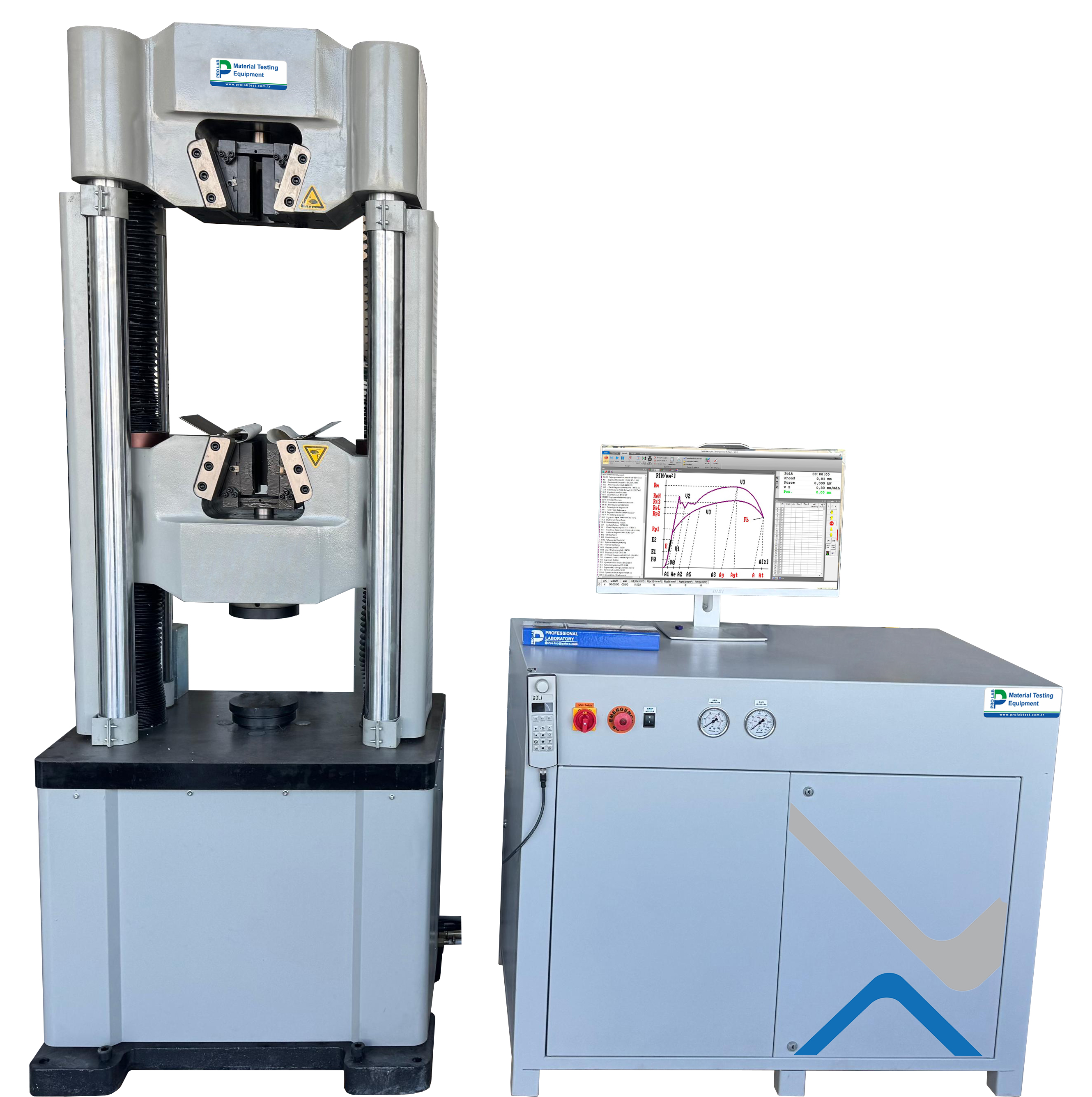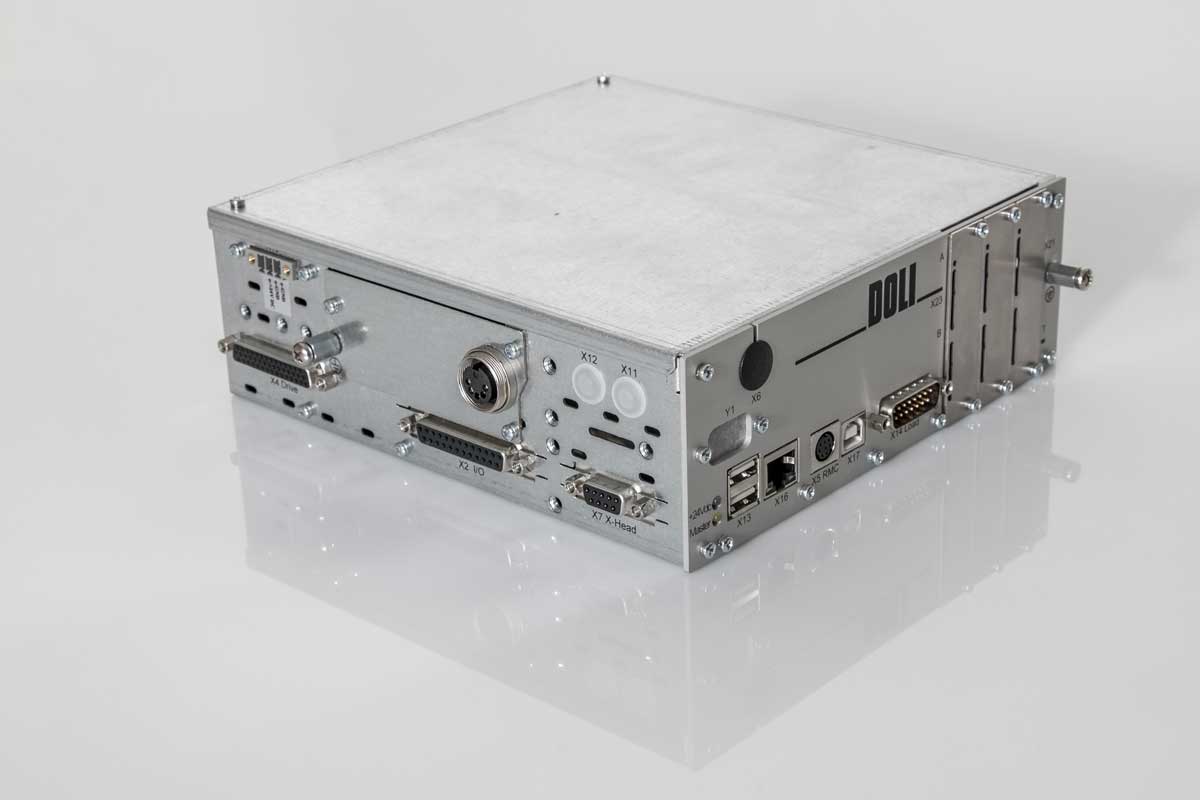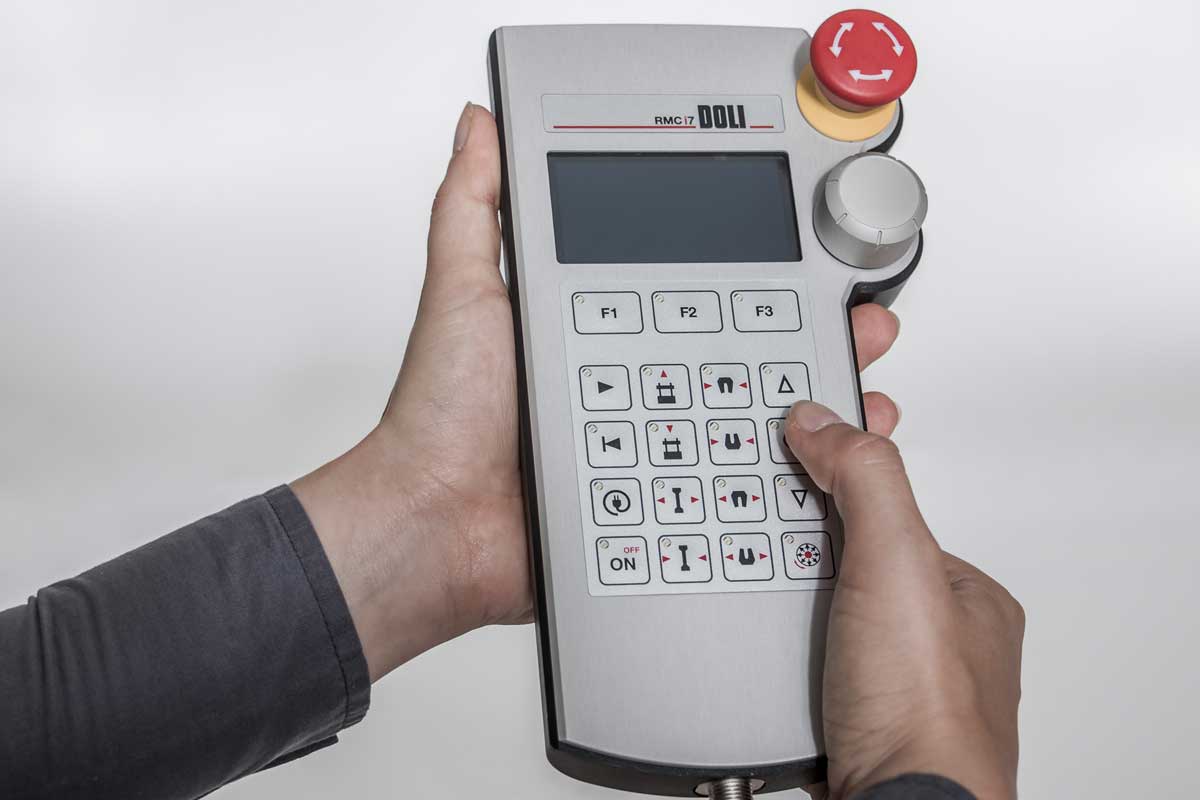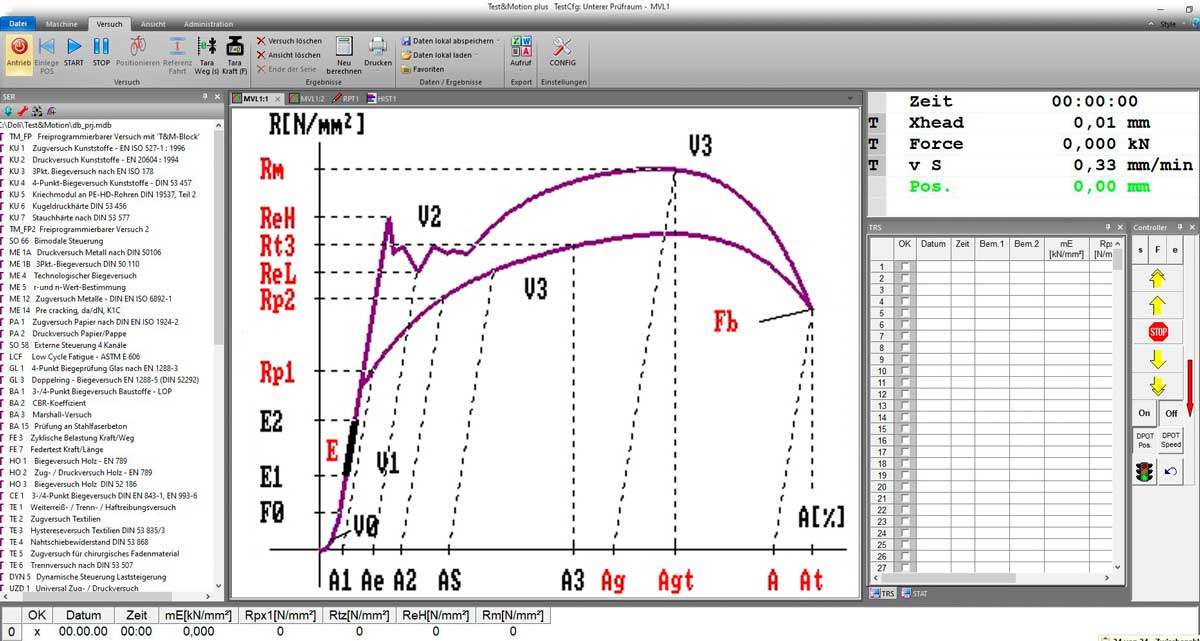





ProLab PLMT-XD Series Universal Testing Machine is designed with a rigid frame in a column construction and features a double work/test space. Load measurement is performed using a Load Cell of class 0.5, PLMT-XD Series ideal for testing long samples or those with high strain values, due to its long piston stroke.
The load frame has a double workspace, a rigid column type compact design, and bidirectional movement, making it suitable for both tensile and compression tests with the ease of changing fixtures. ProLab PLMT-XD system is feasible to test various types and sizes of flat and round specimens and offers a wide range of movement.
It provides high-precision load measurement and control with a class 0.5 load cell. Load Cells can be easily swapped to accommodate different load ranges, enabling more accurate and sensitive measurements, especially for small samples. (Additional Load Cells are available as an optional feature upon request.)
The system is equipped with a special wedge-type (V-type) jaw system. The grips can be quickly and easily changed to accommodate different types and sizes of flat and round specimens. The distance between the grips can be automatically adjusted via both the computer interface and the RMC handheld unit.
ProLab PLMT-XD Universal Testing Machine (UTM) is a servo-hydraulic system with a rigid 6-column load frame, designed to perform a variety of tests, including tensile, compression, transverse bending, and other universal test types. The machine features a double test space for enhanced versatility. It includes hydraulic wedge-type grips for testing both round and flat specimens.
Equipped with a special low-friction, single-acting piston that offers a stroke of ≥ 250 mm, the UTM can accommodate a range of sample sizes with varying lengths. The vertical test area measures ≥ 850 mm, making it suitable for a wide array of testing applications. The load frame supports a same load capacity, with two test areas: the upper section for tensile tests (max. vertical test area = 850 mm) and the lower section for compression and transverse/bending tests.
For compression tests, the maximum span is ≥ 850 mm, and the compression plate has a diameter of 200 mm. Additionally, the frame includes a 3-point transverse/bending apparatus, with adjustable roller spans (up to 500 mm) and interchangeable rollers for customized testing. (optional)
The Electronic Control unit can connect and manage various sensors, including video extensometers, laser extensometers, LVDTs, automatic extensometers, strain gauges, load cells, and both SSI and TTL-type sensors. The unit features EEPROM sensor plugs to store calibration and sensor data, allowing the system to retain sensor data even when components are swapped. This allows for seamless operation when sensors or test components are replaced. The control unit can monitor and manage multiple attached sensors, including additional load cells, LVDTs, and extensometers, and supports both load- and displacement-controlled testing. Position measurements and control are achievable with a resolution of 1 micron.
A handheld unit (RMC) enables easy operation of the machine, allowing users to move the machine and adjust the grips to securely position the sample without needing a computer interface. The load channel offers a resolution of 24 bit, with adjustable load control ranging from 0.01 kN/s to 25 kN/s, and displacement control ranging from 0.1 mm/min to 100 mm/min.
The hydraulic power pack, which includes a motorized servo system for actuator control, also supports the wedge-type grip system. This system is capable of testing both round (up to 70 mm diameter) and flat (up to 75 mm thickness) specimens.
Test system also comes with Universal Testing Software, which allows users to define result parameters linked to load and position. Test results can be exported to Excel for further analysis. The software provides real-time test data display, the ability to save and retrieve data, and generate test graphs. Users can adjust graph axes to display various parameters such as time, load, stress, strain, and displacement. After completing a test, the data can be saved on a computer, and a report can be generated for documentation.